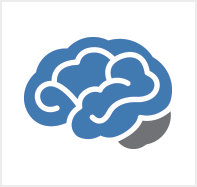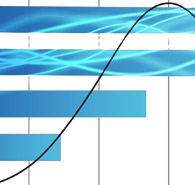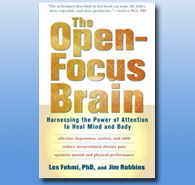Archive for the ‘Protocols’ Category
Monday, August 8th, 2016
By Siegfried Othmer, PhD
 It is probably worth observing that sometime over the past several years the milestone was undoubtedly passed in which the one millionth person benefited from one or another of our neurofeedback protocols, implemented on one or another of our three generations of neurofeedback systems: NeuroCybernetics, EEGer, and Cygnet. It’s difficult to be too precise about these estimates, in contrast to counting hamburgers at McDonalds! So the estimate is deliberately a conservative one. It is probably worth observing that sometime over the past several years the milestone was undoubtedly passed in which the one millionth person benefited from one or another of our neurofeedback protocols, implemented on one or another of our three generations of neurofeedback systems: NeuroCybernetics, EEGer, and Cygnet. It’s difficult to be too precise about these estimates, in contrast to counting hamburgers at McDonalds! So the estimate is deliberately a conservative one.
(more…)
Posted in Neurofeedback, Protocols | No Comments »
Thursday, September 3rd, 2015
By Siegfried Othmer, PhD
 It has been two years since the latest edition of The Protocol Guide, and much has happened in the interim. In fact, the pace of progress in instrument development and in protocol decision-making is such that we are likely to be issuing an update on an annual basis in coming years. It has been two years since the latest edition of The Protocol Guide, and much has happened in the interim. In fact, the pace of progress in instrument development and in protocol decision-making is such that we are likely to be issuing an update on an annual basis in coming years.
The 2015 edition has been significantly altered throughout. A new section has been added to cover two-channel training, including ILF-HD, Alpha-Theta, and synchrony. The ILF-HD frequency range has been extended lower in the software, which has implications for the clinical strategy. There are special sections that highlights the key concepts underlying assessment and training. And there is a new section that covers the multi-sensor for the tracking measures of peripheral physiology: finger temperature, GSR (galvanic skin response, or sweat gland activity), heart rate, and finally scalp EMG (electromyography, or muscle activity).
The Protocol Guide is available in several formats. The hard copy is robust enough to withstand wear and tear in the clinic room, so it can be kept handy there for reference. On-line access is provided through an e-book version. The Protocol Guide is also fully integrated with our new professional forum, which is replacing the list server. The search function will cover not only the Protocol Guide but also relevant list messages over the past several years as well as our other on-line resources such as the training course.
Siegfried Othmer, PhD
drothmer.com
Posted in Protocols | 3 Comments »
Wednesday, March 7th, 2012
 The careers of the scientist/practitioners in the field have undoubtedly had in common the experience of gradually rising expectations about what is possible to achieve in terms of improved self-regulatory capacity and mental functioning with the aid of neurofeedback. One might have expected some plateauing after a while, a firming up of one’s expectations, but the surprises keep coming and they are consistently on the upside. In our own experience, one of the biggest surprises has been the growing effectiveness of neurofeedback with PTSD, along with the related conditions of developmental trauma and the autism spectrum. All of these conditions had seemed so utterly intractable in the past. The careers of the scientist/practitioners in the field have undoubtedly had in common the experience of gradually rising expectations about what is possible to achieve in terms of improved self-regulatory capacity and mental functioning with the aid of neurofeedback. One might have expected some plateauing after a while, a firming up of one’s expectations, but the surprises keep coming and they are consistently on the upside. In our own experience, one of the biggest surprises has been the growing effectiveness of neurofeedback with PTSD, along with the related conditions of developmental trauma and the autism spectrum. All of these conditions had seemed so utterly intractable in the past.
In this newsletter, the focus on PTSD exists not only for its own sake, but also to serve as the best vehicle for the tackling of larger themes. What sets PTSD apart from our clinical work in general is the concentrated effort that has gone into this area by virtue of the great need among our returning veterans. We have attempted to meet this need through a non-profit entity, Homecoming for Veterans (hc4v.org), which has attracted even international participation among clinicians. As a result of these collective efforts, a large database of clinical results has been gathered that is now available for “data-mining.”
(more…)
Posted in Application of Neurofeedback, Clinical Methods, Neurofeedback, Protocols, PTSD, Research, Scientific, Veterans | 9 Comments »
Thursday, February 19th, 2009
 We have just experienced a remarkably quick recovery from PTSD symptoms in a Vietnam veteran. The case is illustrative of the more rapid pace of recovery that is achievable with the latest neurofeedback techniques that encompass the infra-low range of EEG frequencies. The veteran has had a forty-year history of PTSD, and was rescued from homelessness by the Salvation Army here in Los Angeles. He came to our offices for intensive neurofeedback training through the auspices of the Salvation Army. In exchange for our providing services at no cost, the veteran has allowed us to make his case history available for the benefit of other clinicians. We have just experienced a remarkably quick recovery from PTSD symptoms in a Vietnam veteran. The case is illustrative of the more rapid pace of recovery that is achievable with the latest neurofeedback techniques that encompass the infra-low range of EEG frequencies. The veteran has had a forty-year history of PTSD, and was rescued from homelessness by the Salvation Army here in Los Angeles. He came to our offices for intensive neurofeedback training through the auspices of the Salvation Army. In exchange for our providing services at no cost, the veteran has allowed us to make his case history available for the benefit of other clinicians.
For scientific purposes, the veteran has agreed to undergo pre-post quantitative EEG analysis (courtesy of QMetrx) and SPECT imaging (courtesy of the Amen Clinics). As the training is still on-going, these pre-post comparisons are not yet available. However, we do have initial symptom-tracking data that already tell quite a story. Symptoms are assessed on the basis of self-report at typically three-session intervals. Severity is rated on a ten-point scale. Results for the first eighteen training sessions are shown in Figure 1. Overall symptom reduction reached 50% by session ten, and was more than 80% by session eighteen. The symptom list was broadly inclusive, and covered a number of areas not considered to be classically associated with PTSD. Eleven out of the twenty major symptoms were rated at zero by session 18. None were rated higher than 4 out of ten by session 18. The picture is one of broad improvement in self-regulatory capacity.
The picture is actually even more dramatic when data are segregated for the symptoms commonly associated with PTSD. These are shown in Figure 2. With regard to PTSD symptoms, overall improvement reached 50% within three sessions, and reached 93% in 18 sessions. Even more significantly, nightmares, flashbacks, suicidal thoughts, and binging and purging were all eliminated within three sessions. These were the most troublesome PTSD-related symptoms. The most persistent symptoms related to the quality of sleep. At the first QEEG session it became obvious that the veteran was suffering from sleep apnea. He was unable to stay awake for the QEEG assessment. This was a problem during the early neurofeedback sessions as well. By session 18, he was getting through entire alpha-theta sessions without falling asleep. Other persistent symptoms relate to motor function and mobility. Currently the veteran remains confined to a wheelchair. The improvement in hypertension is not entirely attributable to neurofeedback: as a result of the training, the veteran was motivated to be more consistent in taking his blood pressure medication. (more…)
Tags: PTSD, Siegfried Othmer
Posted in Application of Neurofeedback, Clinical Results, Efficacy, Neurofeedback, Protocols, PTSD, Veterans | 2 Comments »
Monday, March 24th, 2008
 In this newsletter we take a look at two recently published books that represent two ends of the spectrum of neurofeedback approaches. They reflect divisions within the field that have remained unreconciled over the decades. They also reflect their authors, who have taken very different approaches in their scientific research. In this newsletter we take a look at two recently published books that represent two ends of the spectrum of neurofeedback approaches. They reflect divisions within the field that have remained unreconciled over the decades. They also reflect their authors, who have taken very different approaches in their scientific research.
The Open Focus Brain
This book could be said to have had a forty-year gestation period. It is a collaborative effort of Les Fehmi and Jim Robbins, and one suspects that Robbins’ recent involvement likely played a catalyst role that finally got the book to happen. The bulk of the book could equally well have been written decades earlier, as Les Fehmi’s model for his kind of neurofeedback has been consistent throughout.
Fehmi’s approach revolves around alpha training, but the salient hypothesis is that the synchrony of our neuronal assemblies strongly influences our state. By enhancing neuronal synchrony in the alpha band, we move to a calmer state of reduced arousal level. Our Western lifestyles tend to move us toward higher arousal level, and toward what Fehmi calls narrow and focused attention. This is energetically and physiologically costly. Practicing movement toward alpha synchrony allows us to explore the space in which our attention is more diffuse. We are more immersed in the experience. The work still gets done, but at a lower level of effort and with much less drain on our resources. (more…)
Posted in Clinical Methods, Neurofeedback, Protocols | No Comments »
Wednesday, June 21st, 2006
The pace of recent developments in terms of clinical approaches calls for an occasional respite to find one’s bearings and recover perspective. First of all, I am amazed that the pace of new developments in this field is not slowing down, and secondly I am surprised that the pace of development of our own approach of mechanisms-based or protocol-based training is not plateauing either.
Looking back there have been several key milestones in the development of our own approach, and each of these has contributed in comparable measure to our clinical efficacy. The first departure to which we contributed some measure of authorship was the natural pairing of “C3beta” with “C4SMR,” using differential reinforcement parameters. The second was the particularization of our work with ADHD with bipolar placements that took us off the central strip, namely the combination of C3-Fz with C4-Pz. The third was the discovery of the pairing of T3-Fp1 with T4-Fp1 for the large category we labeled the instabilities. The fourth was the discovery of the importance of reward frequency optimization in the extension of our work to treatment-refractory populations. The fifth was the discovery of the value of inter-hemispheric placement for addressing our most intractable instabilities. (more…)
Posted in Clinical Methods, Protocols | No Comments »
|
|
Subscribe to Email Newsletter
The EEG Info Newsletter circulates via email at least once a month. A variety of topics related to the Neurofeedback / EEG Biofeedback field are covered in over 200 articles.
|
 It is probably worth observing that sometime over the past several years the milestone was undoubtedly passed in which the one millionth person benefited from one or another of our neurofeedback protocols, implemented on one or another of our three generations of neurofeedback systems: NeuroCybernetics, EEGer, and Cygnet. It’s difficult to be too precise about these estimates, in contrast to counting hamburgers at McDonalds! So the estimate is deliberately a conservative one.
It is probably worth observing that sometime over the past several years the milestone was undoubtedly passed in which the one millionth person benefited from one or another of our neurofeedback protocols, implemented on one or another of our three generations of neurofeedback systems: NeuroCybernetics, EEGer, and Cygnet. It’s difficult to be too precise about these estimates, in contrast to counting hamburgers at McDonalds! So the estimate is deliberately a conservative one. 
 The careers of the scientist/practitioners in the field have undoubtedly had in common the experience of gradually rising expectations about what is possible to achieve in terms of improved self-regulatory capacity and mental functioning with the aid of neurofeedback. One might have expected some plateauing after a while, a firming up of one’s expectations, but the surprises keep coming and they are consistently on the upside. In our own experience, one of the biggest surprises has been the growing effectiveness of neurofeedback with PTSD, along with the related conditions of developmental trauma and the autism spectrum. All of these conditions had seemed so utterly intractable in the past.
The careers of the scientist/practitioners in the field have undoubtedly had in common the experience of gradually rising expectations about what is possible to achieve in terms of improved self-regulatory capacity and mental functioning with the aid of neurofeedback. One might have expected some plateauing after a while, a firming up of one’s expectations, but the surprises keep coming and they are consistently on the upside. In our own experience, one of the biggest surprises has been the growing effectiveness of neurofeedback with PTSD, along with the related conditions of developmental trauma and the autism spectrum. All of these conditions had seemed so utterly intractable in the past. We have just experienced a remarkably quick recovery from PTSD symptoms in a Vietnam veteran. The case is illustrative of the more rapid pace of recovery that is achievable with the latest neurofeedback techniques that encompass the
We have just experienced a remarkably quick recovery from PTSD symptoms in a Vietnam veteran. The case is illustrative of the more rapid pace of recovery that is achievable with the latest neurofeedback techniques that encompass the  In this newsletter we take a look at two recently published books that represent two ends of the spectrum of neurofeedback approaches. They reflect divisions within the field that have remained unreconciled over the decades. They also reflect their authors, who have taken very different approaches in their scientific research.
In this newsletter we take a look at two recently published books that represent two ends of the spectrum of neurofeedback approaches. They reflect divisions within the field that have remained unreconciled over the decades. They also reflect their authors, who have taken very different approaches in their scientific research.